The reasons why Remington has designed and built this quite original bolt action rifle are based on a particular philosophy underlying the multi-purpose weapons, namely hunting and sport shooting. In fact, more and more shooters are approaching selective hunting and vice versa. So much so that the VTR acronym stands for Varmint Tactical Rifle. However, being able to unite all the technical features of both types of weapons, hunting and target/professional shooting, in the same weapon requires thorough knowledge of both techniques, and a certain amount of creative and innovative spirit.
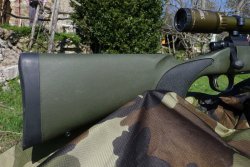
The following arise from these needs: the triangular section barrel, quintessence of the barrel that can dissipate heat faster, conditio sine qua non for the shooter, the radial muzzle brake placed on top of the barrel, which is very useful for taming muzzle climb, enemy of the hunter who has to see the reaction of the wild upon the shot, especially at long distances; the molded synthetic stock with flat handguard, which is essential to deal with harsh ambient temperature ranges, the most adverse weather conditions and most hostile supports, in such a way as to ensure the highest possible accuracy in conjunction with the total insensitivity to warping under those conditions that are unfavorable or jeopardize the accuracy; the R3 buttstock, useful to absorb the recoil to the best, which is also an essential requirement that avoids moving the shooting target too far from the hunterʼs eye. That is why and for what the Remington 700 VTR was designed.
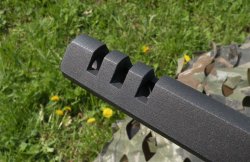
Technical features. The VTR series, which started production in 2008, is currently available in seven variations. The tested weapon is a bolt action with molded green synthetic stock, chambered in .308 Winchester caliber and equipped with a carbon steel barrel with matte satin finish. The cold hammered barrel is 56 cm long (22") and has a rifling pitch equal to 12” at six right-handed grooves, which is very effective for correctly stabilizing bullets between 130 and 168 grains. The triangular profile with the beveled top of the barrel dissipates the heat very well because it has a greater surface area compared to a similar weight round profile and, in addition, has higher rigidity, all for the benefit of overall accuracy. There is an integral muzzle brake with three 5 mm long slots each near the top: the piece of barrel affected by the brake is 43.76 mm long and is drilled at a diameter of 10 mm. The barrel of the VTR is not fully floating as it rests on the top of the handguard by means of two projections: the handguard has a vertical tooth which serves as a pressure point corresponding to the last of the two socket screws with which the stock is joined to the barrel-action assembly, and the front to the trigger guard.
The rifle is equipped with a beautiful synthetic Hogue stock, with cheeckpiece featuring a last generation R3 rubber endplate; useful soft rubber panels are found along the handguard and on the pistol grip to improve the grasp even with wet hands. There are also three very useful hollow pins in which to insert sling swivels, two of them are on the handguard, one for the bipod and one for the strap, and one on the lower back of the stock for the strap. When a synthetic stock is well made, it gives better sturdiness and resistance compared to a similar wooden stock, especially in terms of sensitivity to temperature and moisture. For the VTR, Remington relied on Hogue as the supplier of the stock. The handguard is massive, with a teardrop profile, suitable to be placed on backpacks and bases typical of covered roof terraces, sides and tripods.
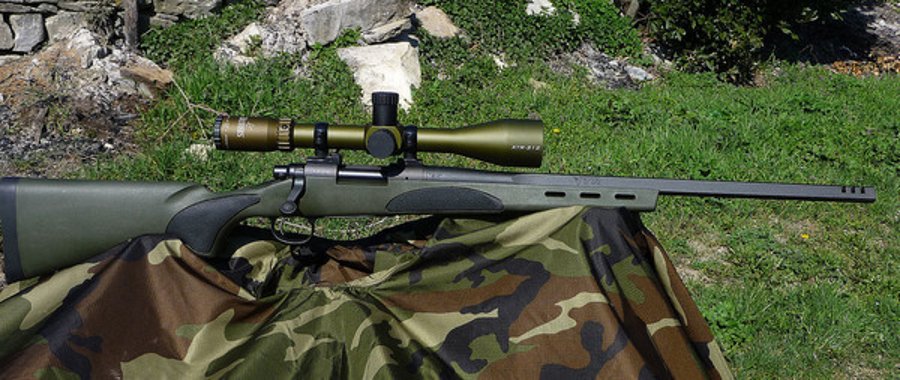
In order to further disperse heat from the barrel and, at the same time, lighten the stock, three large rectangular windows have been placed on each side of the handguard. The barrel with highly accentuated tapering is made of carbon steel with a very heaving antireflection satin finish (Matte Blue). The bolt head with front locking lugs has a spring-loaded piston ejector kept in place by a pin, while the contoured extractor is an original Remington design with spring.
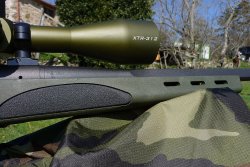
The bolt is made up of three parts that were separately built: two, the head and locking lugs, are joined by welding, while the main body with the handle, inclined plane, tubular body and tenons, for primary extraction, is manufactured using microfusion and jointed to the other two by silver alloy welding and brazing. The two-positioned safety lever is on the right side of the receiver, right beside the back cap of the bolt. In Safe position, the lever blocks the trigger chain from shooting and unloads the trigger but does not block the bolt.
The trigger pack is a state of the art X-Mark pro Adjustable, with two levers, featuring a very useful nickel and Teflon plated finish. Since the weapon must be used for selective hunting with a variable 3-12x optics, I tried to adjust the trigger weight to 2 pounds (approximately 900 grams). The floorplate is made of a satin finished light alloy and is fixed to the action with two socket screws. The bolt release button is found beside the trigger in an advanced position and perfectly flush with the stock.
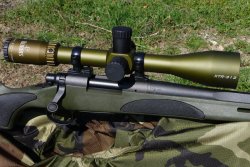
The VTR magazine is fixed, double stack, with a lower hinged plate, with a follower pushed by a W spring. The opening of the lower plate is controlled by a small button found in front of the trigger, right under the upper part of the trigger guard: a rather high pressure must be exerted to operate it, to avoid accidental opening. The maximum capacity of the magazine for this .308 caliber version of the VTR is four rounds, which, when added to a loaded round in the barrel, amount to a total of five rounds available in the carbine.
The recoil is quite acceptable; thanks to the straight stock and generous R3 buttplate able to keep felt recoil on the shoulder to more tolerable levels. The VTR weighs 3405 grams and its length stands at just 105 cm. For my test I used a Burris “military” series variable magnification optics, the XTR-312 3-12x50 mm with Ballistic Mil Dot luminous reticle together with the VTR.

The ammunition of the test. I based my selection of ammunition on two important parameters: first, the extreme variability in physical and anatomical features of the species of ungulates that I wanted to hunt (mainly deer), in very different environments and shooting distances; second, the characteristics of the Burris XTR ballistic reticle that required an ad hoc, precise and constant ammunition. So, it was not easy to identify and find the ideal ammunition. In the end, I found the ideal product: Federal Premium ammunition with 165-grain Sierra GameKing bullet. This loading has provided very good external ballistic performance especially on a 56-inch barrel with muzzle brake; as for the terminal ballistics, it provided excellent performance in terms of stopping power and respect of the flesh on the reference game for the ammunition used.
Below are the basic characteristics of this ammunition.
165-grain Federal Premium Sierra GK (P308C)
Muzzle speed: 823 m/s
Muzzle energy: 369 Kgm
Energy at 100 m: 319 Kgm
Energy at 200 m: 275 Kgm
Energy at 300 m: 240 Kgm
At the range, the zeroing was performed at a distance of 100 m with checks at 200, 300 and 400 m, due to the peculiar constitution of the reticle and the bullet drop compensation system. Half a dozen shots were enough to attain the full zero of the optics/weapon/ammunition system at 100 m with the 165-grain Federal Premium Sierra GK commercial ammunition: the best shot group (of three rounds) obtained was 12x8 mm. Thus, more than excellent performance for commercial ammunition.
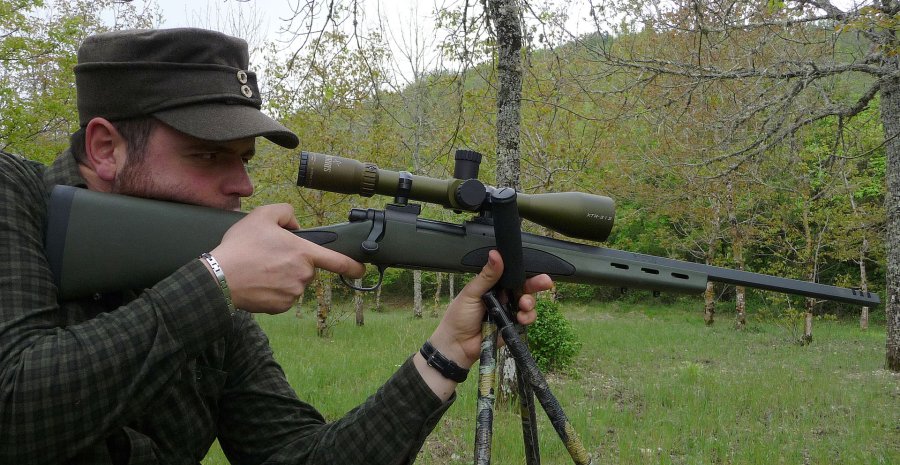
Selective hunting. With the VTR, I was able to kill eleven roes, four fallow and one deer, so I was able to gather a wide range of technical and practical information for the test in question, especially since the shooting distances ranged between 19 and 434 meters on different game, and in very heterogeneous shooting conditions and environments. I must say that a caliber and ammunition that is as well-balanced as this may seem easy to handle on the hunt ‒ and they are, to tell the truth ‒ but to attain 100% potential performance is a different story, especially if you must (or you demand) achieve this 100% in hunting and environmental contexts that are very different from each other.
But there it is: 16 game shot with 17 rounds fired (only one doe needed another shot).
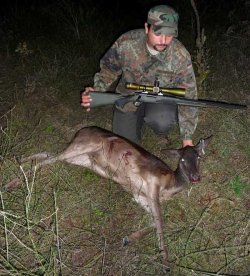
In conclusion, the three hunting seasons passed with the VTR gave me an extremely balanced weapon/caliber/optics and ammunition system, which was accurate and reliable in all weather, environmental and hunting conditions. The hardest part to deal with, at first, was no doubt the choice of ammunition.
It is obvious that this trio will be a bit challenging, especially since it is suitable for long distance use at fixed firing positions, so you need to familiarize yourself with the weight of the trigger and the external ballistics, and take care of the quality of rifle supports in the field in order to make the most of its potential. After that, it will give a lot of satisfaction and be of great value.




